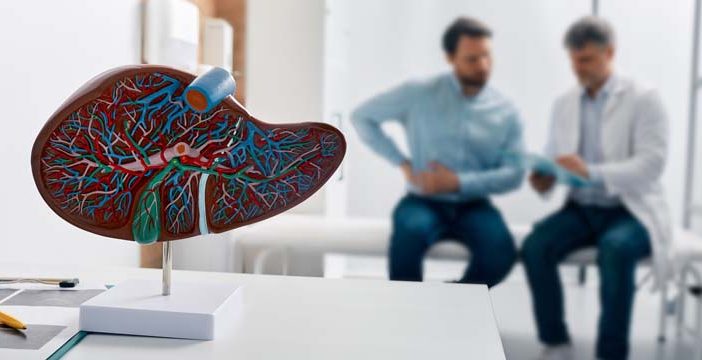
Liver health is an important consideration for people living with diabetes. Some conditions that affect the liver are more common among people with diabetes. Read on to learn more about diabetes and liver health.
What does the liver do?
The liver is the largest organ in the body and is important for regulating blood sugars. When blood sugar levels are high, such as during a meal, the liver stores excess glucose as glycogen. When blood sugar levels are low, for example, when someone is fasting overnight, the liver converts glycogen back to glucose and releases it into the blood.
What liver conditions are common in people living with diabetes?
The most common cause of liver disease is non-alcoholic fatty liver disease (NAFLD), sometimes called fatty liver disease. Around 20% of Canadians are estimated to have NAFLD, but it is even more common among people living with diabetes. Other common causes of liver disease in people with diabetes are alcoholic liver disease, viral hepatitis (such as hepatitis B or C) or autoimmune liver disease (especially in people who have type 1 diabetes).
What is fatty liver disease?
Fatty liver disease is the most common cause of liver disease in people with diabetes. It shares some of the same risk factors as diabetes, such as overweight or obesity and high cholesterol. Fatty liver results from excess fat being stored in liver cells. It can progress to a more serious form of the condition, where damage to the liver occurs from scarring.
What are the signs and symptoms of liver disease?
There are usually no signs of liver disease early on. Rather, the first sign of liver disease is identified from abnormal blood tests, such as an elevated alanine transaminase (ALT) level. This may lead to an ultrasound of the liver being performed to confirm if there is excess fat and assess for any scarring. When liver disease is advanced, symptoms may include a yellow discolouration of the skin or eyes (jaundice), skin itching, abdominal distention, easy bruising, fatigue or confusion.
How is fatty liver treated?
The main treatment for fatty liver is weight loss. A weight loss goal of at least 5% is helpful for improving fatty liver. This can be accomplished through lifestyle changes (diet and exercise), medications or weight loss surgery. Certain medications may be particularly helpful for improving fatty liver disease, such as GLP-1 receptor agonists for blood sugars and statins for cholesterol. In anyone with liver disease, alcohol consumption should be minimized or completely avoided.
How is diabetes affected by fatty liver?
Many of the treatment strategies for fatty liver are similar to the overall treatments for type 2 diabetes, and are focused on weight loss, optimizing blood sugars and lowering cholesterol. If fatty liver progresses to liver scarring and damage, some diabetes medications may need to be adjusted or avoided, since the liver is involved in metabolism of many medications.
Fatty liver occurs commonly in people with diabetes and is most often detected by abnormal blood tests. Weight loss, lowering blood sugar and cholesterol levels, and avoiding alcohol are the most important measures to prevent worsening of liver disease.



